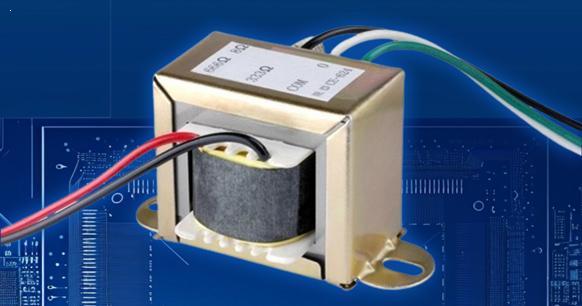
Audio Transformers: Types, Functions, and Working Principles
An audio transformer is an electromagnetic system designed to separate an input circuit from an output circuit and produce a signal that passes through it with filtering. This is achieved by a varying electromotive force (voltage) in the secondary winding linked to the other circuit, caused by the changing flux.
Isolation transformers provide galvanic isolation, ensuring that there is no conductive path between the source and load. This isolation is used to protect against electric shock, to suppress electrical noise in sensitive devices, or to transfer power between two circuits that must not be connected.
Catalog
1. Introduction of transformer
2. What is an audio transformer?
3. Functions and Types of audio transformers
4. Working of audio transformers
5. Limitations of audio transformers
1 Introduction of transformer
A transformer is an electrical system that enables an AC input signal (such as audio) to generate an AC output signal connected to it without physically linking the input and output together. The process is achieved by having two (or more) coils of insulated wire wrapped around a core of magnetic metal. The coils of wire are referred to as windings. As an AC signal passes via the input winding (the primary), it is converted into a similar AC signal on the output winding (the secondary) through a process called inductive coupling. Transformers can be manufactured to have varying impedance ratios by adjusting the number of wire turns in each winding. The gain or loss in signal level is determined by the ratio between the input and output impedances as the signal passes through the transformer. Transformers are bidirectional, allowing for the input winding to become the output winding and vice versa. It is possible that a transformer may exhibit a gain in signal level when used in one direction or a loss when used in reverse, due to its bidirectional nature.
Transformers can be manufactured with different main or secondary windings. Additionally, transformers may be equipped with multiple connections, or "taps," for each winding. The number of taps and the resulting gains or losses determine the impedance.
2 What is an audio transformer?
A transformer is a device that receives and transforms a sinusoidal input signal into an output signal. There is no physical connection between the two during this phase of transfer. The two or three insulated copper wire coils (referred to as windings) wound around a magnetic iron core directly produce this conversion.

Audio Transformer
The Audio Transformer employs this separation property to provide isolation for the transformer's input side amplification mechanism with the output speakers or audio circuitry. In this instance, the ratio of the primary and secondary winding turns is set at 1:1. The transformer does not alter the voltage or current level in this manner. The transformer merely separates the output speaker system from the input amplifiers.
Additionally, there is another type of audio transformer, which, depending on the input AC signal, can alter the output voltage frequency. To generate the optimal sound vibration, the loudspeaker must be supplied with the necessary current and voltage. In order to move a load through it, an audio transformer with a step-up feature can raise the voltage or current level. The same principle applies to the step-down transformer. With the increased current output, the voltage is transformed from a higher to a lower level.
The audio transformer also provides impedance matching parameters. When connecting the output of one circuit or device to the input of another, it is crucial to assess the impedance of both devices. This function is provided by an impedance matching transformer, which transforms higher impedance output to lower impedance to drive a low impedance speaker or to feed another low impedance unit.
3 Functions and Types of audio transformers
1. Functions of audio transformers
1) Step up the signal voltage (increase) or step down (decrease);
2) Raise or decrease a circuit's impedance;
3) Convert from unbalanced to balanced circuits and vice versa;
4) Block DC current in a circuit when permitting the flow of AC current;
5) Separate one audio unit electrically from another. While transformers are useful in other applications, this paper focuses on their use in audio.
2. Types of Audio Transformers
The Audio Transformer can be used in several implementations. Typically, for audio-related applications, three types of audio transformers are the most commonly used.
1) Impedance matching transformer
2) Step-up audio transformer
3) Step-down audio transformer
Another special audio transformer is also available, which is useful for digital audio applications and operates at high frequencies in general.
Transformers may also have numerous main and secondary taps, providing customers with the flexibility to adjust the output instruments without modifying the expensive audio transformer. A transformer, for instance, may have multiple secondary taps to link multiple loads with an impedance of 4 ohms, 8 ohms, or even 16 ohms. However, when operating with it, only one tap must be attached to the load. In general, such transformers are expensive and can be used in retro music systems or amplifiers.
The transformer's intended use will determine its specific body type. In order to accommodate the bulky weight, a chassis-mount transformer requires a supporting chassis. Based on their characteristics and intended use, PCB-mounted audio transformers are also available in different shapes and sizes.
4 Working of audio transformers
Although there is no direct connection between the primary and secondary coils of an audio transformer, the transformer enables bidirectional functionality between these two windings. It is also possible to use the same primary side as the secondary and the secondary as the primary. In such cases, the transformer is responsible for signal loss in one direction and signal gain in the opposite direction or vice versa.
The audio transformer is capable of operating at frequencies ranging from 20 Hz to 20 kHz. Consequently, the audio transformer can be applied to a much larger frequency spectrum.
The audio transformer employs the impedance matching method, as previously discussed. This device is particularly useful for balancing amplifiers and loads that use separate input or output impedances for full power transfer applications (loudspeakers and others).
Speaker impedances have evolved from 4 to 16 ohms in modern times, while transistor or solid-state amplifiers utilize 200-300 ohms output impedance, typically 4 ohms, 8 ohms, or 16 ohms. If the amplifier is of a retro style, such as an old valve or tube amplifier, the output voltage may exceed 300V with 3k impedance. We require an impedance matching converter that transforms high impedance to low impedance and converts the voltage and current to a degree that powers a loudspeaker directly.
A transformer may have multiple windings on both the primary and secondary sides. The ratio of main and secondary windings, the number of coils on the primary side (Np), and the number of coils on the secondary side (Ns) are collectively referred to as the ratio of turns. The main and secondary voltage ratios are also defined by this turn ratio, as the voltage is directly proportional to the primary and secondary winding turns.
5 Limitations of audio transformers
The first constraint is frequency reaction. By default, audio transformers transmit only audio signals. An audio transformer can either limit or obstruct signals that are below or beyond the 20-20,000 Hz audio spectrum. Depending on the circumstances, this may be perceived as either a disadvantage or an advantage. A further limitation is that, without introducing distortion, audio transformers have a maximum input level that cannot be exceeded. A transformer is considered saturated when the full amount is surpassed, which means that it does not carry any additional signal. A third limitation is that, when used in standard audio circuits, audio transformers do not amplify a signal by more than approximately 25 dB. Due to these limitations, a microphone preamp is typically not replaced by an audio transformer. In the event that a gain of more than 25 dB is required, it is advisable to use an active preamplifier in place of a transformer.




